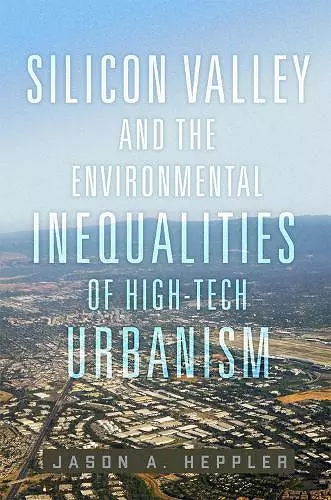Silicon Valley and the Environmental Inequalities of High-Tech Urbanism Volume 9
Format:Paperback
Publisher:University of Oklahoma Press
Published:23rd Apr '24
Should be back in stock very soon

In the half century after World War II, California’s Santa Clara Valley transformed from a rolling landscape of fields and orchards into the nation’s most consequential high-tech industrial corridor. How Santa Clara Valley became Silicon Valley and came to embody both the triumphs and the failures of a new vision of the American West is the question Jason A. Heppler explores in this book. A revealing look at the significance of nature in social, cultural, and economic conceptions of place, the book is also a case study on the origins of American environmentalism and debates about urban and suburban sustainability.
Between 1950 and 1990, business and community leaders pursued a new vision of the landscape stretching from Palo Alto to San Jose—a vision that melded the bucolic naturalism of orchards, pleasant weather, and green spaces with the metropolitan promise of modern industry, government-funded research, and technology. Heppler describes the success of a new, clean, future-facing economy, coupled with a pleasant, green environment, in drawing people to Silicon Valley. And in this overwhelming success, he also locates the rapidly emerging faults created by competing ideas about forming these idyllic communities—specifically, widespread environmental degradation and increasing social stratification. Cities organized around high-tech industries, suburban growth, and urban expansion were, as Heppler shows, crucibles for empowering elites, worsening human health, and spreading pollution.
What do “nature” and “place” mean, and who gets to define these terms? Key to Heppler’s work is the idea that these questions reflect and determine what, and who, matters in any conversation about the environment. Silicon Valley and the Environmental Inequalities of High-Tech Urbanism vividly traces that idea through the linked histories of Silicon Valley and environmentalism in the West.
“With deep empathy and keen insight, Jason Heppler shows what lies beneath the sparkling high-tech campuses of today’s Silicon Valley: a long and tangled history of environmental transformation and trade-offs, mythmaking and moneymaking, conservation and exclusion, and a western landscape remade many times over. This book is an invaluable addition to the literature.”—Margaret O’Mara, author of The Code: Silicon Valley and the Remaking of America
"Silicon Valley and the Environmental Inequalities of High-Tech Urbanism explains how ‘land, real estate, segregation, and pollution’ became central themes in the history of Silicon Valley and other booming metropolises of the postwar American West. Drawing on discussions sparked by several local controversies from the 1940s through the 1990s, Jason Heppler skillfully dissects people’s shifting perceptions of the places where they lived, worked, played, polluted, and argued about the future. As populations multiplied, as subdivisions and science parks supplanted orchards, as activists challenged the elite’s plans and power, and as the Valley acquired more Superfund sites than any other American county, inhabitants produced a remarkably wide and diverse range of attitudes toward and commitments to ‘nature.’”—John M. Findlay, author of The Mobilized American West, 1940–2000.
ISBN: 9780806193748
Dimensions: unknown
Weight: 272g
224 pages